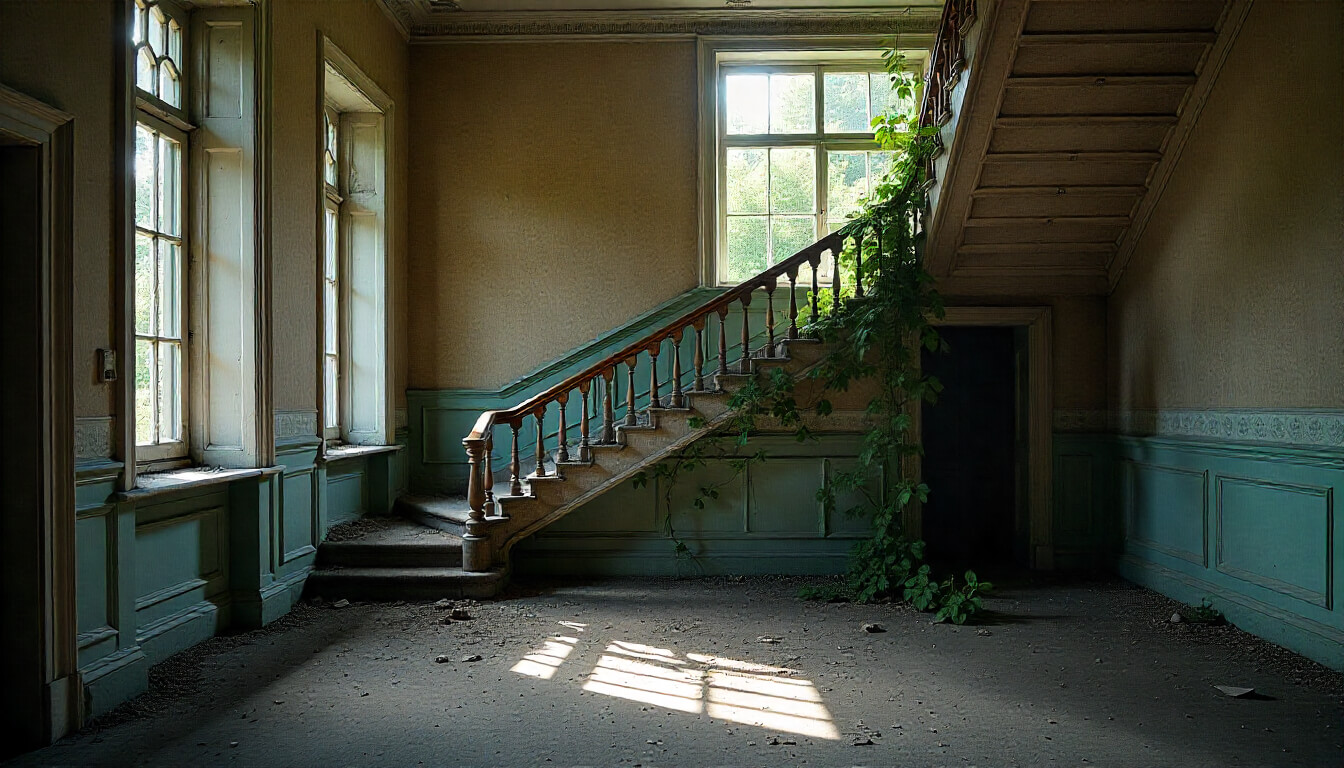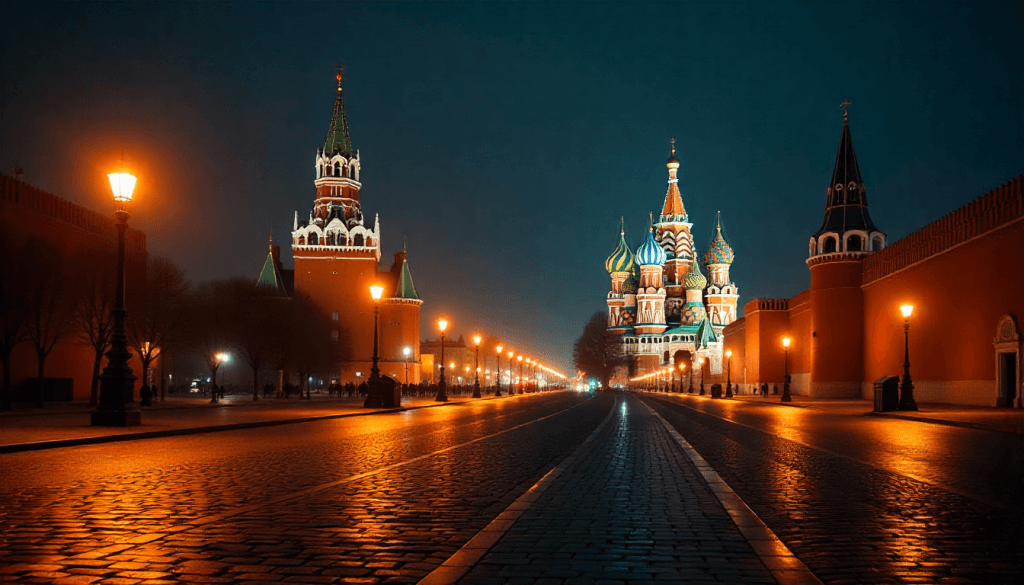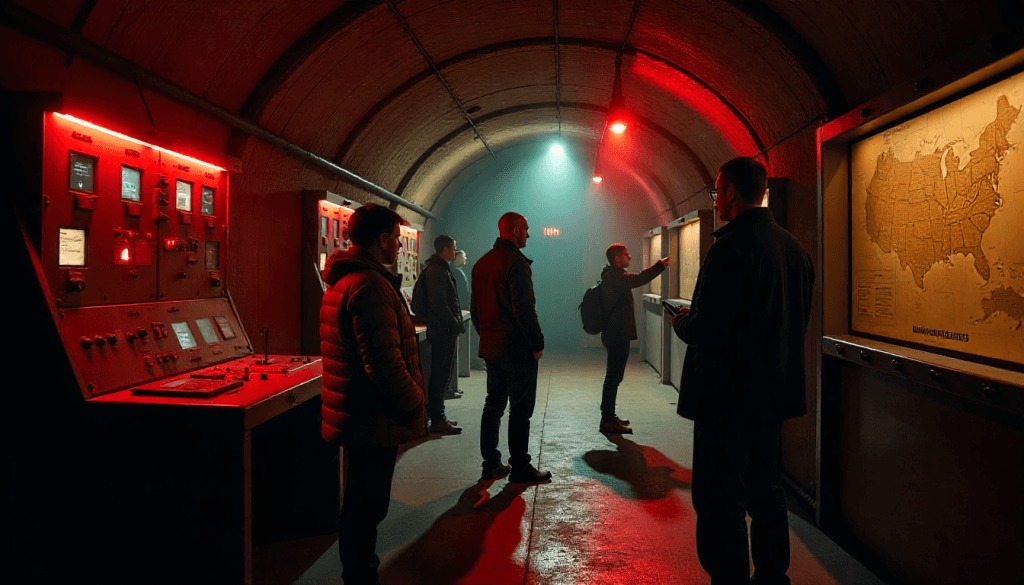Moscow, a bustling metropolis with its vibrant cultural scene and impressive modern architecture, also holds a hidden, intriguing side for the adventurous. Just beyond its dynamic city limits, the surrounding region conceals a surprising number of forgotten relics from bygone eras. For enthusiasts of urban exploration (urbex), discovering Abandoned Places Near Moscow offers a unique opportunity to step back in time, witness the effects of decay, and capture hauntingly beautiful photographs. These day trips provide a stark contrast to the city’s lively rhythm, inviting a reflective journey into history.
The Allure of Abandoned Spaces
Urban exploration, or urbex, is the act of investigating decaying or disused man-made structures. It is an activity driven by curiosity, a fascination with history, and a desire to see places untouched by modern life. These sites often whisper tales of their past, from once-grand estates to forgotten industrial complexes and decaying Soviet-era facilities. For many, the thrill lies in the discovery, the photographic opportunities, and the profound sense of stillness that contrasts with the world outside.
Near Moscow, these forgotten sites offer a tangible link to Russia’s complex history. They stand as silent witnesses to periods of rapid industrialization, social change, and moments of both triumph and decline. Visiting Abandoned Places Near Moscow allows explorers to engage with these narratives in a very direct and personal way, seeing the physical remnants of lives lived and industries that once thrived. Therefore, such trips provide more than just adventure; they offer a unique historical perspective.
Types of Abandoned Places in the Moscow Region
The diversity of abandoned structures around Moscow is quite remarkable, reflecting the region’s varied past. Explorers can find a wide range of sites, each with its own unique character and story.
Decaying Noble Estates and Sanatoriums: The Moscow Oblast is dotted with former noble estates, many of which fell into disrepair after the 1917 revolution or during later periods. These include once-magnificent mansions, often surrounded by overgrown parks, showcasing remnants of aristocratic life. Some were later converted into sanatoriums or Pioneer camps during the Soviet era, and their subsequent abandonment has left behind eerie, yet architecturally fascinating, structures. Bykovo Estate, for instance, with its Gothic-revival church and dilapidated manor, has long been a popular, albeit semi-abandoned, destination for photographers and history buffs. Similarly, old sanatoriums, with their faded murals and empty dormitories, offer a poignant glimpse into Soviet-era healthcare and leisure.
Former Industrial Sites and Factories: The Soviet Union’s emphasis on heavy industry resulted in numerous factories and industrial complexes being built around major cities. As economic priorities shifted and technology advanced, many of these facilities became obsolete and were eventually abandoned. These sites often feature vast, empty workshops, rusting machinery, and crumbling brickwork. They present a gritty, raw aesthetic that appeals to many urbex photographers. Exploring these former industrial hubs can offer a powerful insight into Russia’s manufacturing past. This type of urban exploration near Moscow unveils a significant aspect of the region’s economic history.
Military and Scientific Relics: The Cold War era left behind a legacy of fascinating, often secretive, military and scientific installations. While many of the most sensitive sites are heavily guarded or have been dismantled, some lesser-known or partially abandoned facilities exist. These might include former radar stations, abandoned bunkers, or research facilities. These locations often evoke a sense of mystery and offer unique structures for exploration. However, these are typically among the most challenging and potentially risky sites to access.
Ghost Villages and Rural Decay: Further afield, but still within a day-trip radius, one can find abandoned villages, particularly in areas where rural populations have declined. These ghost settlements offer a melancholic beauty, with wooden houses slowly being reclaimed by nature. They represent the demographic shifts that have occurred in many parts of Russia. Therefore, discovering these forgotten places Moscow‘s countryside holds can be a truly unique experience.
Notable Destinations for Urban Exploration
While many sites are unofficial and require careful research, some have gained a degree of notoriety among the urbex community.
The former Hovrinskaya Hospital in northern Moscow was perhaps the most famous abandoned building within city limits, a colossal, unfinished Soviet-era hospital known for its brutalist architecture and eerie atmosphere. It was a pilgrimage site for many urbex enthusiasts due to its immense size and haunting reputation. However, this structure was entirely demolished in 2018, underscoring the dynamic nature of Abandoned Places Near Moscow. This highlights that popular sites can disappear quickly due to redevelopment.
Further out in the Moscow Oblast, the aforementioned Bykovo Estate remains a prominent location. Its romantic, crumbling facades and the striking Vladimirskaya Church (which is still active) provide a rich visual narrative. Although parts of it are being restored or guarded, areas of the manor house and surrounding grounds offer ample photographic opportunities. Similarly, a burnt-out maternity hospital in Ramenskoye and an abandoned children’s camp near Istra have been documented by explorers, each telling its own story of disuse and decay.
Another intriguing area is the Syany Stone Mines, an artificial cave system created from limestone excavation. While not “abandoned buildings” in the traditional sense, these vast underground labyrinths offer an entirely different type of exploration. They present a complex network of tunnels, chambers, and even underground lakes, attracting experienced explorers. These geological features provide a fascinating alternative to architectural ruins.
Safety and Responsible Urban Exploration
Urban exploration inherently carries risks, and responsible conduct is paramount. When visiting Abandoned Places Near Moscow, safety should always be the top priority.
- Research Thoroughly: Before setting out, gather as much information as possible about the location. This includes checking its current status (is it demolished? Is it guarded?), potential hazards, and accessibility.
- Never Go Alone: Always explore with at least one trusted companion. In case of an emergency, having someone else present can be crucial.
- Prioritize Personal Safety: Wear sturdy, closed-toe shoes with thick soles to protect against broken glass, nails, and uneven surfaces. Long trousers and sleeves are advisable to protect against scratches and insect bites. A reliable flashlight (or two, with spare batteries) is essential, especially in dark interiors. A basic first-aid kit is also a must.
- Assess Structural Integrity: Old buildings can be unstable. Do not climb on precarious structures or enter areas that show signs of imminent collapse. Floors, ceilings, and staircases can be compromised.
- Beware of Hazards: Look out for broken glass, rusty metal, exposed wiring, open shafts, and mold. Some industrial sites may have chemical residues. Old buildings can contain asbestos.
- Respect the Location: The core principle of urbex is “Take nothing but pictures, leave nothing but footprints.” Do not vandalize, steal, or disturb anything. Leave the site as you found it for future explorers and for its preservation. Avoid graffiti or adding new elements.
- Be Aware of Legalities: Entering private property without permission is trespassing and illegal in Russia. Many abandoned sites have owners, even if they appear derelict. Security guards are common, and engaging with them respectfully is important. Gaining permission beforehand, if possible, is always the best and safest approach. However, for many true abandoned sites, permission is rarely granted. Be discreet and avoid drawing attention.
- Local Sensitivities: Be mindful of local residents if exploring in or near inhabited areas. Avoid making noise or causing disturbances.
These precautions are essential for a safe and enjoyable experience when exploring Abandoned Places Near Moscow. The thrill of discovery should never overshadow personal safety and legal considerations.
Getting There: Logistics for Day Trips
Most Abandoned Places Near Moscow require travel outside the immediate city center. Public transportation, combined with a short taxi ride or a walk, is often the most feasible option.
- Commuter Trains (Elektrichka): Russia’s extensive network of suburban electric trains is an excellent way to reach towns and villages in the Moscow Oblast. These trains are generally reliable and affordable. From major Moscow railway stations (like Kursky, Kazansky, Yaroslavsky, Belorussky, etc.), one can reach various destinations within 1-2 hours.
- Buses: Regional buses also connect Moscow with surrounding settlements. Bus routes can sometimes offer more direct access to smaller, more remote locations.
- Car Rental/Taxi: For ultimate flexibility, renting a car allows explorers to reach more remote sites that are inaccessible by public transport. Ride-hailing apps can also be used, though finding a return ride from truly isolated locations might be challenging.
- Navigation: Using offline maps (e.g., Maps.me) is highly recommended, as mobile signal can be unreliable in remote areas. GPS coordinates, if available, are invaluable for pinpointing precise locations.
Planning the logistics carefully ensures that an urban exploration day trip is both rewarding and hassle-free. It minimizes time spent on transit and maximizes time for exploration.
In conclusion, for those with a keen interest in history, architecture, and photography, discovering Abandoned Places Near Moscow offers a captivating and unique adventure. These decaying remnants of the past provide a compelling contrast to Moscow’s vibrant present, inviting visitors to ponder the stories they hold. While urban exploration demands careful preparation, adherence to safety protocols, and respect for the sites, the rewards of uncovering these hidden gems are truly unforgettable. Each crumbling wall and forgotten artifact contributes to a deeper understanding of the region’s rich and multifaceted heritage.

 Abandoned Places Near Moscow: Urban Exploration Day Trips">
Abandoned Places Near Moscow: Urban Exploration Day Trips">

 Moscow’s Smart City Features: How Technology Enhances Tourism in 2025">
Moscow’s Smart City Features: How Technology Enhances Tourism in 2025">
 Moscow After Midnight: Late-Night Attractions and 24-Hour Experiences">
Moscow After Midnight: Late-Night Attractions and 24-Hour Experiences">
 Industrial Tourism in Moscow: Factory Tours and Manufacturing Heritage">
Industrial Tourism in Moscow: Factory Tours and Manufacturing Heritage">
 Moscow’s Creative Spaces: Artist Studios and Alternative Galleries">
Moscow’s Creative Spaces: Artist Studios and Alternative Galleries">
 Industrial Tourism in Moscow: Factory Tours and Manufacturing Heritage">
Industrial Tourism in Moscow: Factory Tours and Manufacturing Heritage">
 Moscow Pass for Digital Nomads: Co-working Spaces and WiFi Hotspots">
Moscow Pass for Digital Nomads: Co-working Spaces and WiFi Hotspots">
 Moscow for Sports Fans: Stadiums, Teams, and Athletic Heritage in 2025">
Moscow for Sports Fans: Stadiums, Teams, and Athletic Heritage in 2025">
 Secret Gardens and Hidden Parks: Moscow’s Green Oases in 2025">
Secret Gardens and Hidden Parks: Moscow’s Green Oases in 2025">
 Moscow’s Medical Tourism: World-Class Healthcare and Wellness Centers">
Moscow’s Medical Tourism: World-Class Healthcare and Wellness Centers">